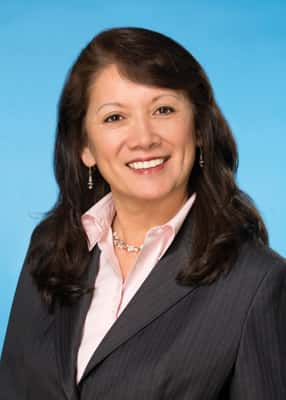As the tail end of the Millennial generation graduates college and enters the American workforce, one thing seems to be clear: It is long past the time to go hard on soft skills.
The generation that was weaned on technology and grew up with smartphones is wired with all the hard skills one can imagine, from computer programming to accounting. But somewhere along the line, many didn’t learn about the need to show up on time, dress appropriately and make an effort to play well with others. It’s a generational trait that wears thin on their Baby Boomer and Gen X employers, not to mention the customers and clients to which Millennials serve up their unique concept of customer service. And now it’s all hands on deck to catch them up to speed.
A skill set in decline
Soft skills—and the intrinsic need for them in business—aren’t anything new, according to Peg Saragina, adjunct faculty member and former department chair in the Santa Rosa Junior College business department. It’s just that they’ve been in decline. In fact, the U.S. Department of Labor realized there was a problem with generational workplace comportment in the early 1990s and established the Secretary’s Commission on Achieving Necessary Skills (SCANS)—a blue ribbon panel of commissioners from multiple industries and unions, including workers at all levels in all kinds of fields.
“They did this becaus e they noted changes in work ethics. [Back then] employees in their 40s to 70s still had work ethics because of their upbringing and the way the country was at the time. It was required that one work hard and have commitment and loyalty to one’s employer – and vice versa,” Saragina explains. But the newer generations didn’t have that loyalty, commitment and drive, a breakdown that Saragina traces back to post-WWII.
e they noted changes in work ethics. [Back then] employees in their 40s to 70s still had work ethics because of their upbringing and the way the country was at the time. It was required that one work hard and have commitment and loyalty to one’s employer – and vice versa,” Saragina explains. But the newer generations didn’t have that loyalty, commitment and drive, a breakdown that Saragina traces back to post-WWII.
“Home life changed. Mothers started working outside the home, and we had latch-key kids. As parents, we didn’t want them to want as much as we did when we were kids, so we spoiled them. Children were no longer held responsible,” she says. She recalls that when she was a child, if the principal called home, it meant the child was at fault. But the next generations didn’t ascribe to that. “With them, the principal was wrong. Parents hovered, kids were not held accountable.” Soft skills training became important when people couldn’t cope, learned to blame everyone else and were not held accountable, she asserts. Saragina was one of the original educators to work on the rollout of SCANS and SRJC has been on the forefront of stressing soft skills in its workplace curriculum for many years now.
Common sense?
Brad Davis, now dean of workforce development at SRJC, taught the “Soft Skills for Business” class for seven years. Each semester, during the first class session, he wrote the following sentence on the classroom blackboard: “Common sense isn’t necessarily common practice.”
He found that what most would consider to be an assumption—such as, if one isn’t able to work for whatever reason, one calls in to alert the employer—was not something many of his students understood was expected.

One of the favorite questions he posed to students was: “Tell me, by raising your hands, what is the okay time period to show up for work? Half of them said within a half hour late was fine…and they really thought that! I told them, ‘It’s not, and you can be let go for that,’ and they looked at me and said ‘Wow!’”
One course he taught dealt with how to work with different generations. “Older generations valued honesty and integrity, Boomers (1946-1964) wanted money, Gen X (1965-1981) wanted flexibility, and Millennials (1982-1996) want to make a difference and feel valued,” he says. Getting it all to work together – well, it could be problematic. Time management and teamwork were other classes he taught.
Davis said lack of soft skills development, in his opinion, is linked to technology overload. “There’s almost no social intercourse—people look at their phones all of the time. In a restaurant, over dinner, there might be four minutes of conversation. The rest of the time they are on the phone.” He also cites the lack of teenage jobs. “They don’t exist. A lot of schooling [in soft skills] took place when teens had jobs. When people go to work for the first time, and they are in their 20s, employers assume they know things they really have not learned.” Finally, he believes young people don’t learn at home like they used to. “When I was a kid, we ate dinner at the table all together. Nowadays that’s not the case. The social skills learned at home are just not there.”
Learning the ropes
Because soft skills are notably lacking, educators, human resource managers and employment companies are increasing their efforts to bring Millennials up to speed through college classwork, hands-on training, advisory sessions and coaching.
At SRJC, the soft skills classes described by Davis are just part of a much bigger program. Called the Career Hub, it incorporates the school’s work experience department, career development services and student employment office.
While several components are addressed, the work experience program is considered to be a jewel in the SRJC crown. It’s a formal program, not just students working and getting class credit for being employed, Davis explains. An assigned instructor within the department meets with the student and employer to set learning objectives and specific goals to achieve over the semester. In the end, the instructor meets with the student and the employer, and both the student and the employer grade the work. The college takes the average between the two grades to arrive at the student’s final grade in the program.
Hands-on experience, Davis believes, is the best way to teach soft skills. “The classroom setting is one thing. We try to make it like the workplace, but it’s not,” he says. With the Work Experience Program, “employees and employers provide valuable feedback. The student sees that there are skills that are important that they never thought were important.”
SSU Career Center
Sonoma State University offers a plethora of services and training through its Career Center. Recently revamped, its three main programs are formal advising, employer recruiting and a career closet.
Formal advising ranges from resumes, cover letters, career exploration, interviewing techniques, job applications and other readiness tools needed to manage a professional career, according to Audra Grady Verrier, SSU career center coordinator. Topics are covered one-on-one and in workshops.

Employer recruiting is through career fairs, held throughout the year, and through Handshake, a global job board that allows employers to post positions they have available. According to Verrier, there are 80,000 employers posting on Handshake worldwide and more than 4,200 have posted specifically with since January. All SSU students have access to the platform.
Career Closet is a closet of professional clothing that has been donated to the university. Every semester, students can select two to three items of professional clothing to keep. While dressing the part is not recognized as an official soft skill, appropriate attire is important even in today’s more casual workplaces, Verrier says.
“Students are hungry—they want information and they want to be prepared,” Verrier observes. And it shows in the number of students who are reaching out to SSU’s Career Center. According to Verrier, during the 2017-18 school year, SSU Career Center offered services and 300 students sought formal advising. “This [school] year, we had 78 advisory sessions in the first week of classes alone,” she says. “What we are doing is working.”
Employers recruiting at SSU are happy, too. “So many employers have told me they are impressed with how many students they’re talking to, how many applications they’re getting and how the students are more engaged and more prepared than ever before,” she says.
Verrier believes career skills aren’t necessarily innate, but instead can be learned. While many point to technology as a cause of soft skill shortfalls, Verrier notes that a lot of SSU students are first-generation Americans and may not have been exposed to career and professional development before attending college.
Professional coaching
Arlene Smith, director of training and development for Santa Rosa-based The Personnel Perspective, echoes Verrier’s assessment that soft skills are not innate. TPP is a business management consulting firm with core expertise in human resources, training and development, and recruitment.
“They’ve never been innate,” Smith says, “but they are becoming more critical.” The Personnel Perspective’s coaching program exists because business executives often want to develop their leadership skills to learn new ways to deal with have workplace issue arising from interpersonal skills.
While TPP offers high potential, managerial, and executive training on a wide number of topics, including human resources issues for management, presentation skills and how to manage difficult employees, Smith says soft skills—critical thinking, emotional intelligence, listening, interpersonal skills and more—are incorporated into all trainings, whether or not topic-specific. “Soft skills are critical,” Smith says. “Those are the things that get people in trouble, or cause them to not fit in.”
Smith tells of a non-profit organization in San Francisco that studied a welfare-to-work program that called her in to assist when they discovered a trend. “It wasn’t the technical skills that caused people to lose jobs and end up back on welfare,” she says. “It was their lack of interpersonal skills. People who did not know how to effectively communicate were the ones ending up back on welfare.” In most cases, if they were experiencing job issues, it was because they struggled to communicate. “They didn’t know how to ask the right questions, or have a difficult conversation, so they avoided it and things escalated into conflicts,” says Smith.
Smith has noticed an uptick in professional training requests. “Employers are more interested in a series of trainings, where they can recognize gaps in skills and take a deeper dive in skills they need to ensure people have to remain successful. For example, she adds, when teenagers are learning to drive, they don’t take one class in driver’s ed and immediately know how to safely drive a car. “They need to take a series of training classes that include classroom instruction and driving lessons with the instructor to become safe, defensive drivers. This is the same methodology we apply to our training programs to carefully tailor them to the needs of the organization and their people to continuously build their skills.”

Smith says more companies today are paying attention to “onboarding”—investing in getting a person into an organization. “Good candidates are hard to find and you don’t want to lose them because you didn’t give them the opportunity to grow,” she says. “It’s human nature to want to learn and grow. We want to have the opportunity to expand our knowledge and skills to be of value and continue to learn.”
And while soft skills get a lot of attention these days, Smith notes one other business truth.
“The bottom line is if a person can meet the results, sometimes the soft skills are overlooked until problems start to surface. The person may not have strong communications skills, or work effectively with others, or lack leadership skills, and each of these are underpinned by soft skills development.”
What advice does she have for employers in that situation? “Think about the hidden cost that type of behavior has on the company,” says Smith. “If an employee can achieve results, yet has a negative impact on morale and/or others (colleagues, staff, stakeholders, or clients), there can be a lot of collateral damage that occurs. This type of behavior could cost the company in terms of lost productivity, low morale, high turnover, and negative public perception.”
And if an applicant’s skill set warrants overlooking a lack of soft skills, Smith advises addressing the problem early on. “The employer needs to have the conversation as soon as they recognize there’s a problem,” she says. “Putting the conversation off will potentially lead to the collateral damage. Once the employer has the conversation with the employee, then determine the best course of action. If it’s due to lack of skill, then soft skill training may be a part of the support given to the employee.”




